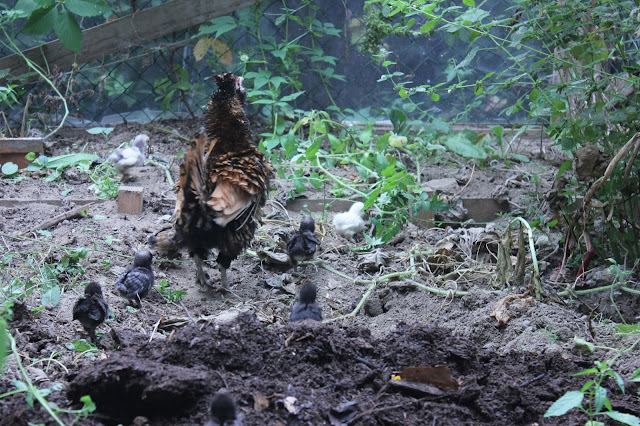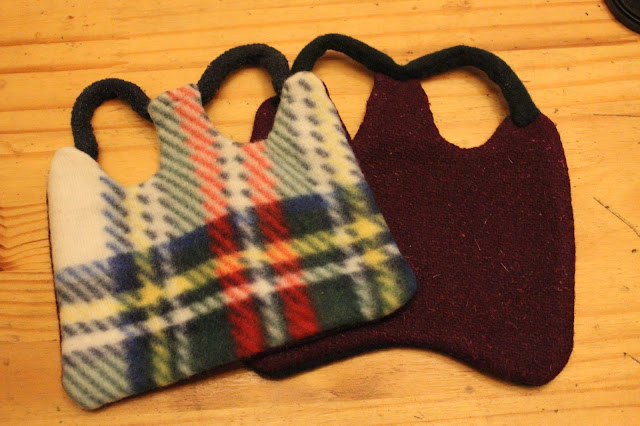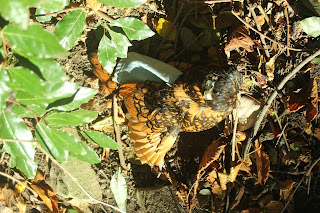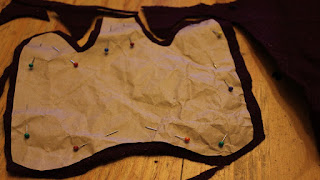If you have just arrived at this topic, then Part One can be found here. One of the easiest all round solutions for chicks in cold and wet weather is to get a greenhouse, or better still to build it yourself from reclaimed materials. On our Green Lever blog and Organikmechanic youtube channel we have detailed information on the design and fabrication of a cheap yet robust greenhouse, totally suitable for poultry. For the more adventurous, there is also our design for a reclaimed glass window version too. Links to both are at the end of this piece.
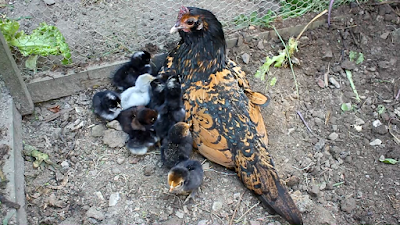 Before I had the above greenhouse I used a glass coldframe for the chicks but this has now grown into a full sized glass greenhouse, again designed by Andy and again made from repurposed materials, old windows and untreated pallet wood. This will cut down on a great deal of wind chill and can give your chicks plenty of room, even if you have plantings and have to use a run, which you can keep moving.
Before I had the above greenhouse I used a glass coldframe for the chicks but this has now grown into a full sized glass greenhouse, again designed by Andy and again made from repurposed materials, old windows and untreated pallet wood. This will cut down on a great deal of wind chill and can give your chicks plenty of room, even if you have plantings and have to use a run, which you can keep moving.
 Amongst all other pressing considerations, don't forget your mother hen! As the weather's changing she will be constantly under stress to work ever harder to find food, you can do a great deal to help her provide this. There is however, one thing that should not be overlooked and that is to verify that she is eating too. Hens can lose a lot of weight being mothers and in cold weather this can be dramatic. Your hen can also be in the moult at this time of year so bear in mind she needs her share of those feather-building amino acids, folate (B9) from leafy greens and the all important B12!
Amongst all other pressing considerations, don't forget your mother hen! As the weather's changing she will be constantly under stress to work ever harder to find food, you can do a great deal to help her provide this. There is however, one thing that should not be overlooked and that is to verify that she is eating too. Hens can lose a lot of weight being mothers and in cold weather this can be dramatic. Your hen can also be in the moult at this time of year so bear in mind she needs her share of those feather-building amino acids, folate (B9) from leafy greens and the all important B12!
All the very best,
What about the weather?
During the Spring I am usually looking to put even day-old chicks outside with their mother at around 16°C or 60°F. As already mentioned in the previous post, if I know my mother well, I will also let them free-range from day one. In the Autumn/Fall, I am always trying to achieve these temperatures by using the means as outlined in the previous post (Part 2), in particular for Frizzles, Sebright and Ardenner or other fine feathered crosses. However, the problem is that I can't always guarantee either an Indian Summer or dry weather.
SOLUTION
One of the secondary uses for a greenhouse in cold weather, other than growing food, is that it is invaluable for chicks. If you are getting ready for planting Winter vegetables then all the better as your chicks can sort through compost and work it into the soil. They can also do some weeding and clean up pests hoping to overwinter in comfort. This greenhouse is one designed by Andy and is made of repurposed materials, untreated pallet wood and wire netting from the dump/tip. We did pay for the polythene and originally this was low grade and cost less than 5 Euros but after 3 years of use we changed it to horticultural grade, which we bought on-line. This greenhouse will also stand up to snow but hopefully by then these chicks will be on the way to full feathers!
 Before I had the above greenhouse I used a glass coldframe for the chicks but this has now grown into a full sized glass greenhouse, again designed by Andy and again made from repurposed materials, old windows and untreated pallet wood. This will cut down on a great deal of wind chill and can give your chicks plenty of room, even if you have plantings and have to use a run, which you can keep moving.
Before I had the above greenhouse I used a glass coldframe for the chicks but this has now grown into a full sized glass greenhouse, again designed by Andy and again made from repurposed materials, old windows and untreated pallet wood. This will cut down on a great deal of wind chill and can give your chicks plenty of room, even if you have plantings and have to use a run, which you can keep moving.How do I ensure optimum growth in cold weather?
As already mentioned, my main idea for getting chicks outside is for them to hoover up as much nutrient as possible before the onset of Winter. What I am normally looking for is some wing feather development by day three. If I see that I usually think I am on track. With large hatches of mixed chicks, you can sometimes get one or a couple of chicks who are larger anyway, so you will need to keep an eye out that there are fair shares for all.
SOLUTIONS
'Breakfast like a king', we do that so our poultry do too. Here pictured left, the very small start their day in the run to make sure they all get a good feed. I actually let all my chicks out first, even though I have some adult birds roosting in the trees. Thus even though they are down to breakfast at the same time as the chicks, I make sure I have enough plates filled to accommodate everyone. I have never fed crumbs of any sort to chicks. My mother hens break up food and anyway I am feeding sprouted grain, so it is soft and easy to digest. I do give some rolled organic five cereals sometimes, because they seem to like it but more importantly I want my chicks to get their fair share of anything from the compost bin. I also have a friend who has a beautiful organic garden, which she keeps immaculately, so all her leaf mould and debris is stored neatly in a single area, which I can go and fetch a supply from if in need. It's good to have reciprocal agreements like this to fall back on. I get a lot of organic fruit and vegetable 'waste' given me too and again I make sure the chicks get their fair share.
In wet weather recently I positioned the breakfast plates in strategic areas so that the mothers with chicks could keep dry under the bushes
whilst the chicks could have a sort of self-service buffet when they felt like emerging.
What about your hen?
 Amongst all other pressing considerations, don't forget your mother hen! As the weather's changing she will be constantly under stress to work ever harder to find food, you can do a great deal to help her provide this. There is however, one thing that should not be overlooked and that is to verify that she is eating too. Hens can lose a lot of weight being mothers and in cold weather this can be dramatic. Your hen can also be in the moult at this time of year so bear in mind she needs her share of those feather-building amino acids, folate (B9) from leafy greens and the all important B12!
Amongst all other pressing considerations, don't forget your mother hen! As the weather's changing she will be constantly under stress to work ever harder to find food, you can do a great deal to help her provide this. There is however, one thing that should not be overlooked and that is to verify that she is eating too. Hens can lose a lot of weight being mothers and in cold weather this can be dramatic. Your hen can also be in the moult at this time of year so bear in mind she needs her share of those feather-building amino acids, folate (B9) from leafy greens and the all important B12!
Thanks
for dropping by and do feel free to share experiences or ask for
further information in the comment section. If you have enjoyed this
piece and found it
useful think about sharing it with your family and friends, on social
media and also maybe about joining this blog
and/or subscribing to my Youtube channel or even supporting us on
Patreon or
It all helps to keep me going!
All the very best,
Sue
RELATED POSTS
 How to cope with chicks in cold weather. Part 1
How to cope with chicks in cold weather. Part 1
With the weather being so capricious at the moment, the hens are risking
late hatches, so I'm sharing some of the strategies I use to get the
best outcome for the chicks and Mother...read more
 How to cope with chicks in cold weather. Part 2
How to cope with chicks in cold weather. Part 2
Including provision for vitamin D3 and B12 and the amino acids essential
for feather growth, physical, nervous and immune system support...read more

Broody adopts chicks in cold weather.
Some times people comment in surprise on my films that a hen will raise
anything but her own eggs but this is only half the story...read more
